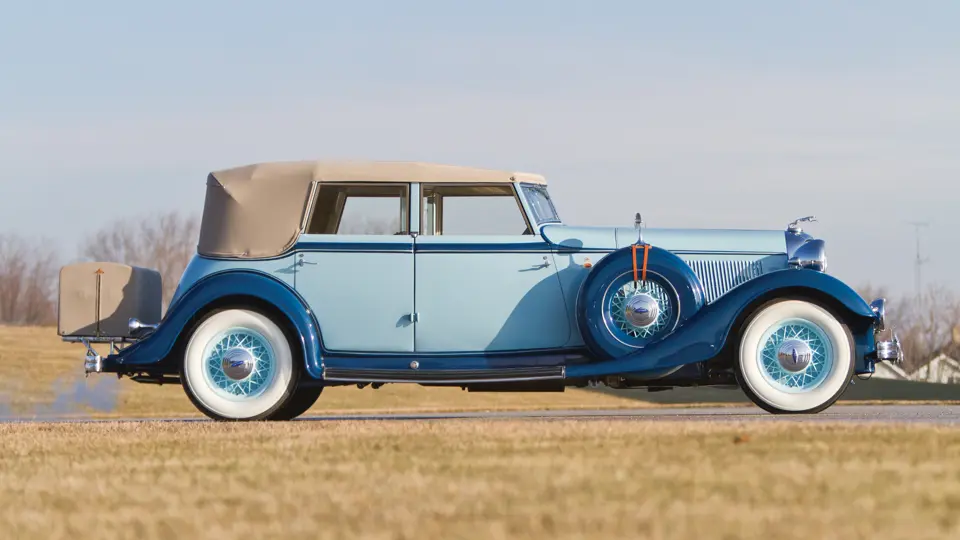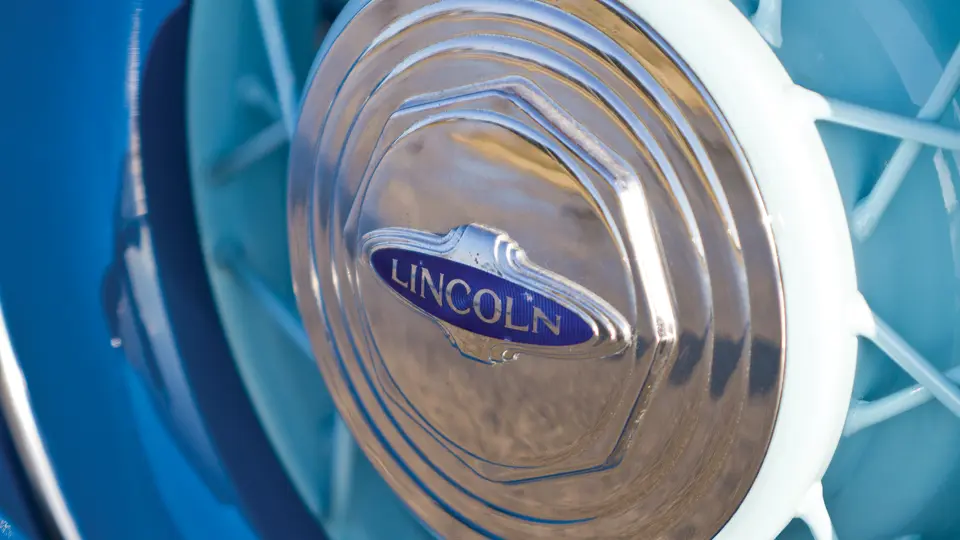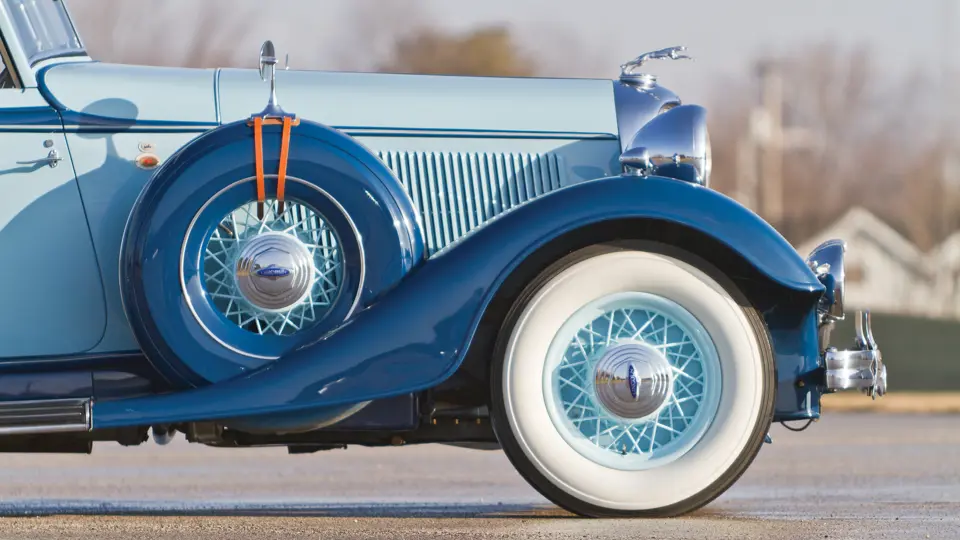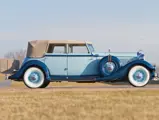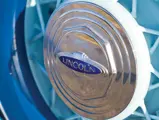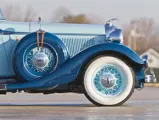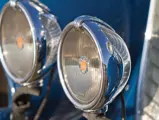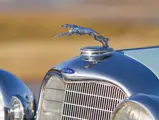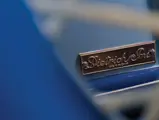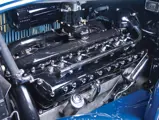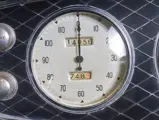150 bhp, 447.9 cu. in. L-head V-12 engine, three-speed manual transmission, solid front axle and live rear axle with semi-elliptic leaf springs, four-wheel power-assisted mechanical brakes. Wheelbase: 145"
• One of 15 built, four known in the CCCA
• 96.5 points, first place at CCCA 2011 National Grand Classic
• Single-family ownership for a half century, including former president of Lincoln Owners Club
The 1920s were a time of mechanical improvement at Lincoln. Four-wheel brakes, initially fitted for police service, were adopted across the board in 1927. For 1928, the engine was bored out to 385 cubic inches, which, with larger valves and higher compression, improved its torque characteristics. Rubber engine mounts were added in 1929 to reduce vibration, and the brakes were changed to the internal-expanding type, with cooling fins added to the rear drums.
In 1931 came a new model, the K. A cruciform-braced chassis frame had a wheelbase of 145 inches and allowed a much lower stance. A new peaked radiator and longer hood combined with more flowing fenders to give the car a more graceful, streamlined look. Underneath, synchromesh and free-wheeling were added to the transmission, and cable-operated Bendix Duo-Servo brakes were adopted. The engine, too, was new, with five main bearings. Although it had exactly the same displacement as its predecessor, higher compression and better manifolding netted a third more horsepower.
For 1932, Lincoln took a page from the Cadillac playbook and introduced a V-12 engine in the new KB model. But where Cadillac’s was a 45-degree overhead valve unit of 368 cubic inches making 135 bhp, Lincoln went for a 65-degree L-head displacing 447.9 cubic inches. It weighed half a ton and developed 150 bhp. In a final nod to Henry Leland, it used fork-and-blade connecting rods, though it would be the last Lincoln engine to do so. For one final season the V-8 returned, as a Model KA on the short 136-inch wheelbase used in 1930.
Lincoln fully committed itself to 12-cylinder power in 1933. A new “small” V-12, displacing 382 cubic inches and abandoning Lincoln’s hallmark fork-and-blade rods, replaced the V-8 in the KA, Lincoln’s entry-level car. KBs kept the 447.9 cid fork-and-blade engine but adopted a new cruciform double-drop chassis frame. New vacuum booster brakes were fitted, with adjustable assist. The shock absorbers gained thermostatic control to compensate for various weather conditions. The transmission was redesigned, and free-wheeling was made optional.
The radiator shell was given a rearward slope, with grille-work over thermostatically-controlled shutters. The handsome exposed horns of earlier models were now hidden behind the grille, and the headlights were given a new shape and made free standing.
Late in January, acknowledging the influence of Packard and Cadillac, Lincoln introduced skirted fenders. Dealers were instructed to update cars still in stock with the new style and to exchange fenders free of charge on cars already delivered, should customers request it. Although the 1933 catalogue contained 26 KB body styles, 17 from custom coachbuilders, only 533 cars were delivered, some styles selling in very modest quantities. Among them was the 261, the Dietrich Convertible Sedan, exemplified by the car offered here, one of only 15 built.
Similar to the Style 241 Convertible Sedan built for Lincoln by Dietrich in 1932, the 261 differed in several details. The window reveals and body moldings were revised, and the rear body contour became convex rather than concave. This gave room for an enclosed luggage compartment, although an exterior trunk rack was still provided. Smoking sets and hassocks were provided for the rear passengers.
This Model KB Convertible Sedan has been in single-family ownership for nearly half a century. Purchased in 1966 by the current owner’s father from W.B. Adams of Camillus, New York, who had owned it for at least a decade, it has been active in Lincoln Owners Club and Classic Car Club of America circles, particularly in the 1960s and ’70s. A former president of the Lincoln Owners Club, the owner’s father was a recognized expert on prewar Lincolns and often said it was the best tour car he’d ever owned. The car received CCCA First Primary status in 1966 at Buck Hill Falls in Pennsylvania and was issued medallion number 276, which it still wears. The following May it achieved First: Senior Division at Minneapolis. It received many AACA and CCCA awards over the following decade. Due to the owner’s failing health, it was not driven after the late 1970s but was always kept in climate-controlled storage. It has remained in the same family ever since.
In 2009 it was brought back to show and touring condition. This work, performed in the Chicago area, included completely rebuilding the V-12 engine, repainting of the cowl, hood, fenders and wheels, all new glass, a new top, boot and exterior trunk cover and new tires. Upon completion, it was judged at 96.5 points, taking First Place in the Custom Senior Division at the January 2011 CCCA National Grand Classic at Palm Beach, Florida.
Delightful in two shades of blue, the car has the late-style skirted fenders. Although predating the 2009 freshening, the black leather interior is excellent and shows no wear. Versatile and strong, this Lincoln is ideal for CCCA CARavans and other tours. A beautiful design in every respect, one would be hard-pressed to find another example as lovely.


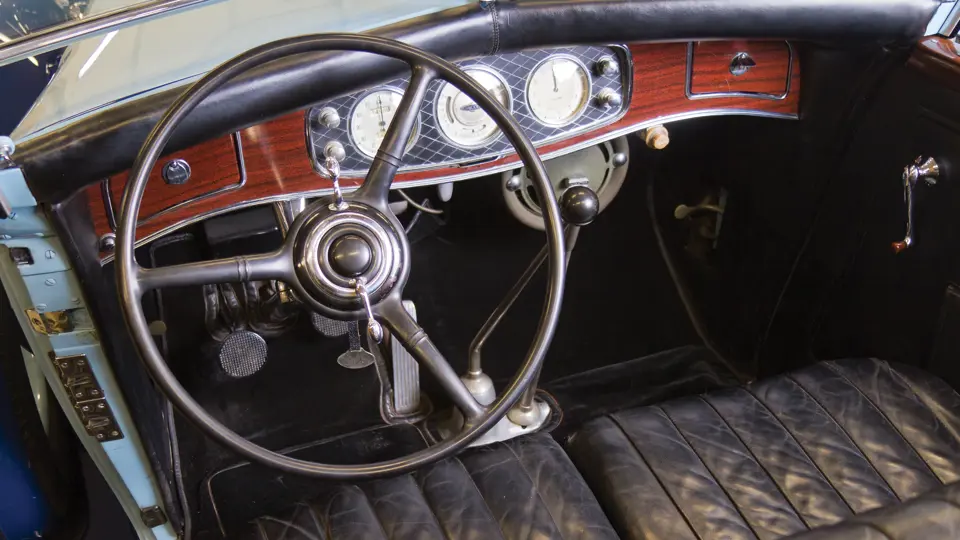

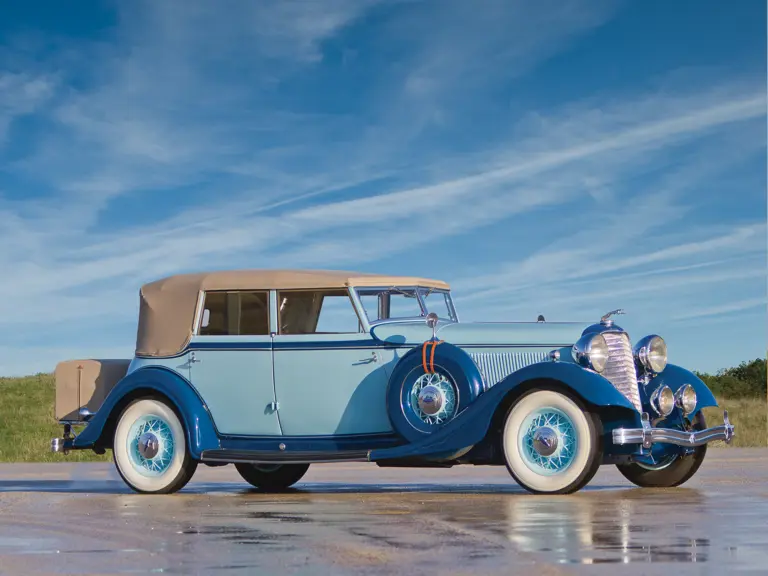

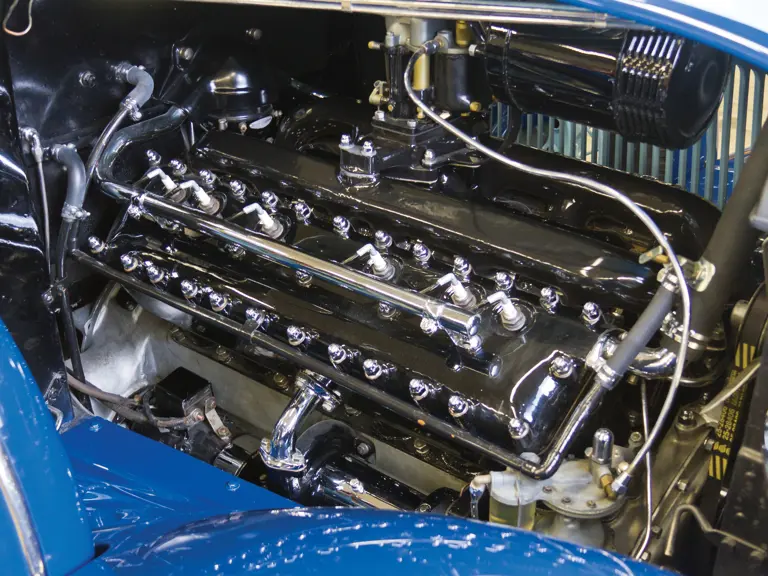

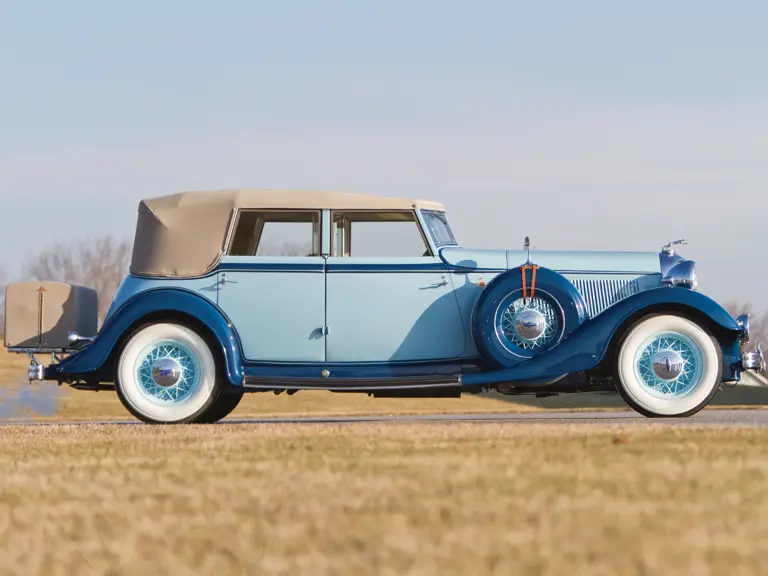
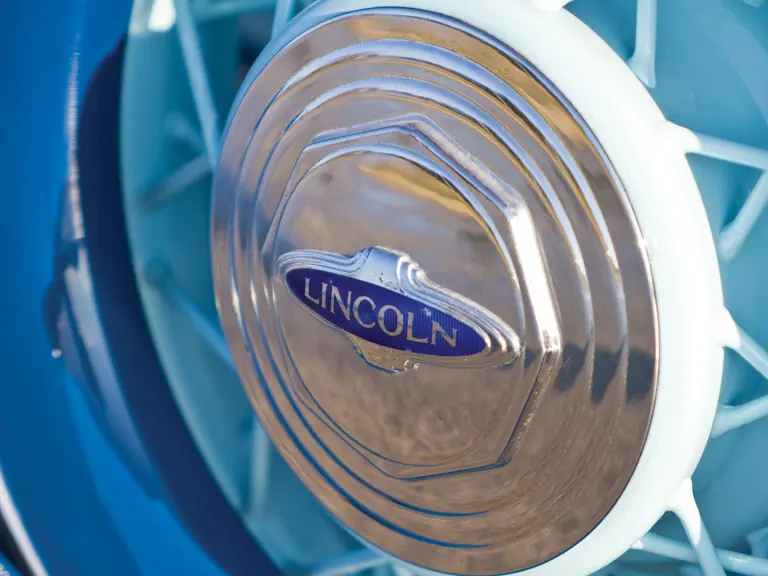

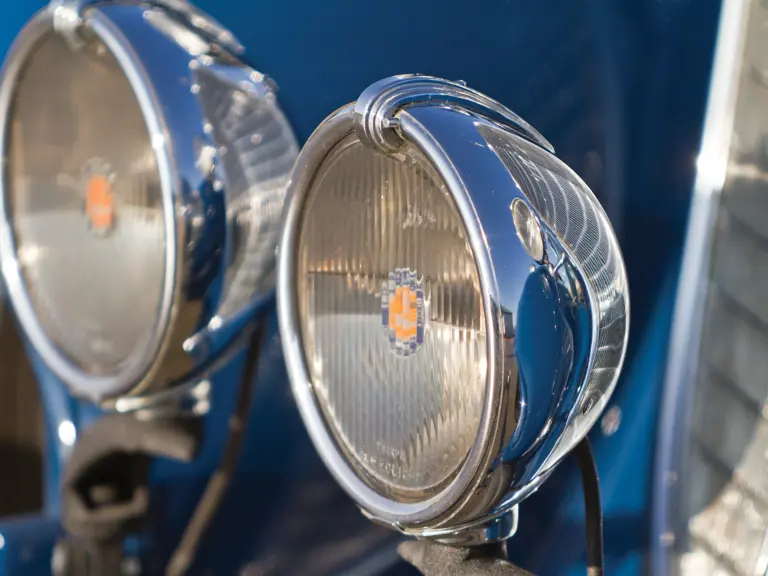
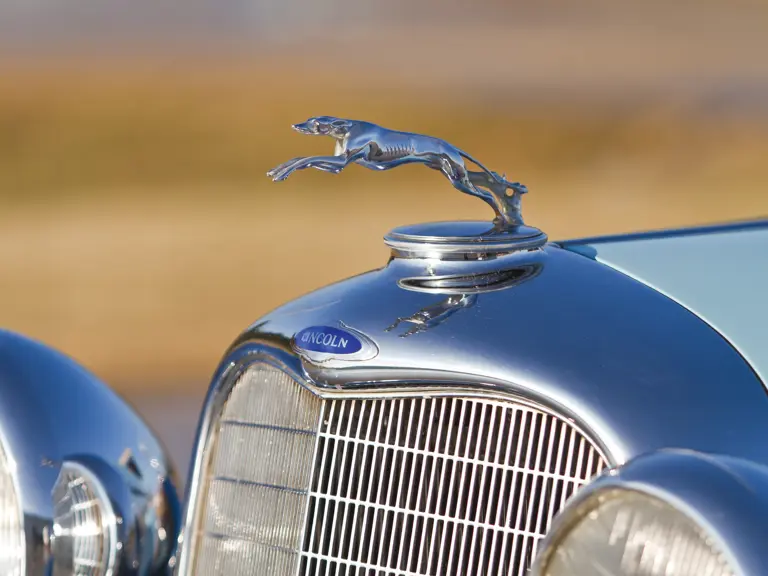
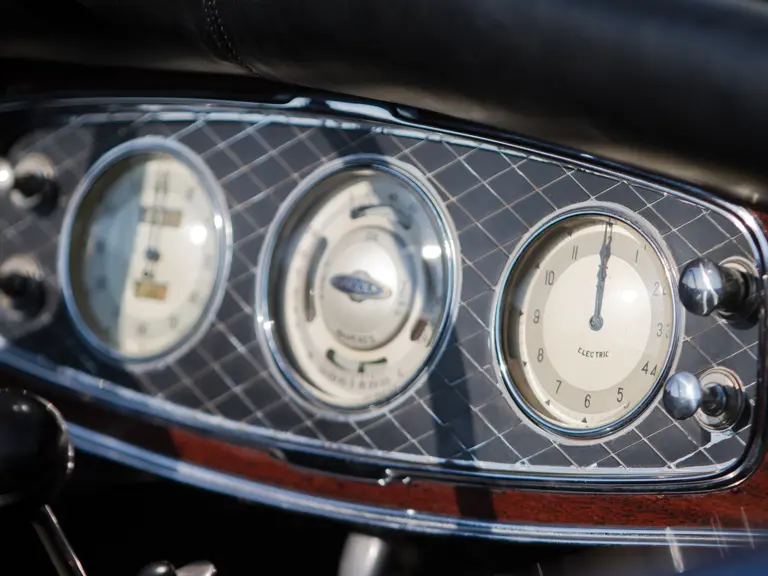
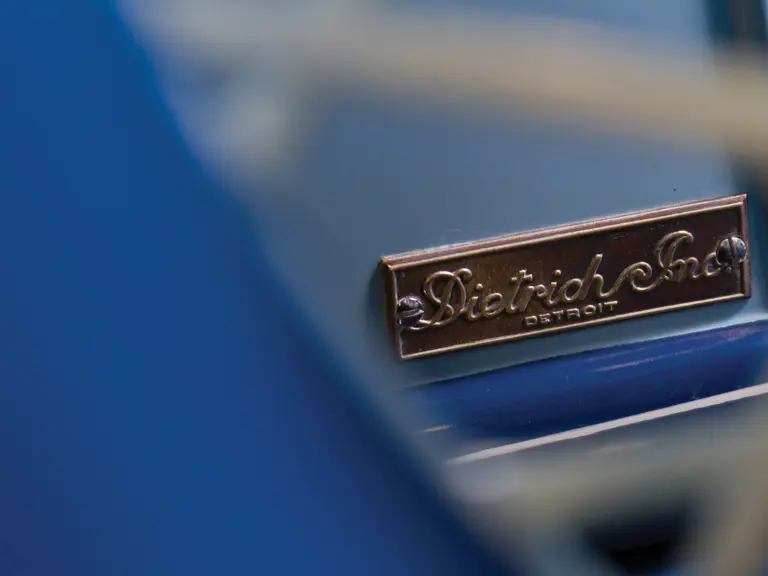


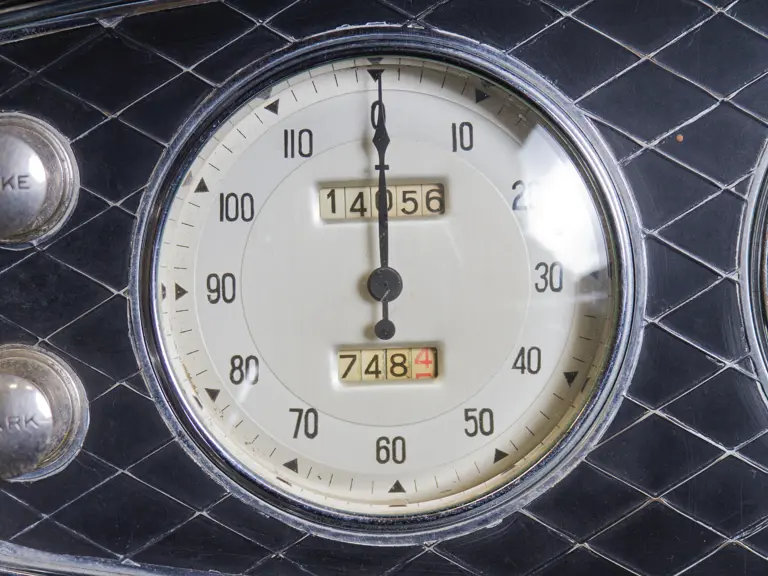
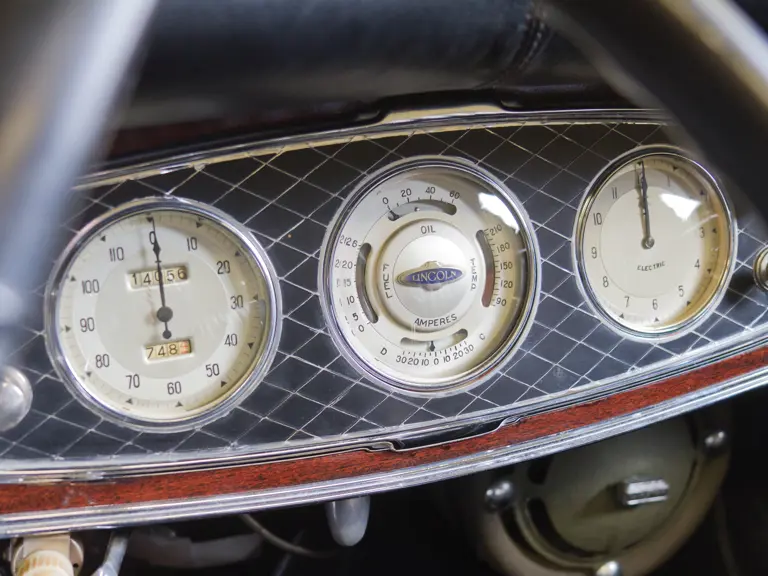

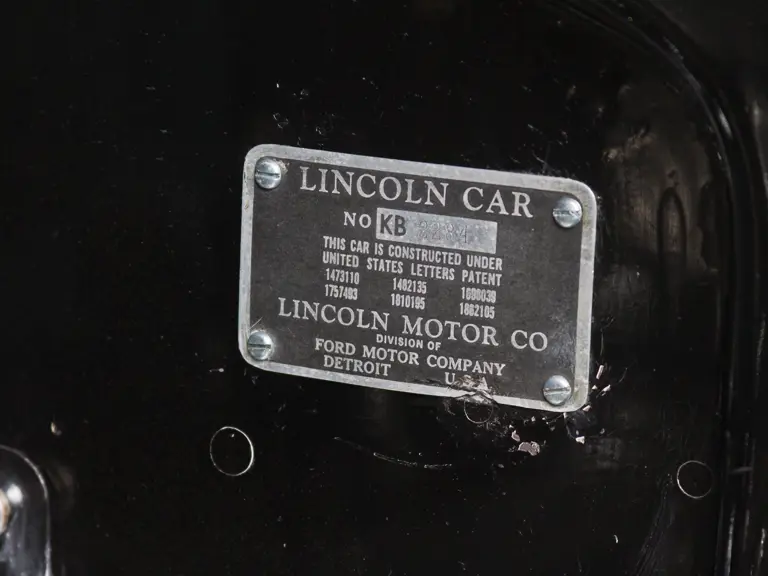
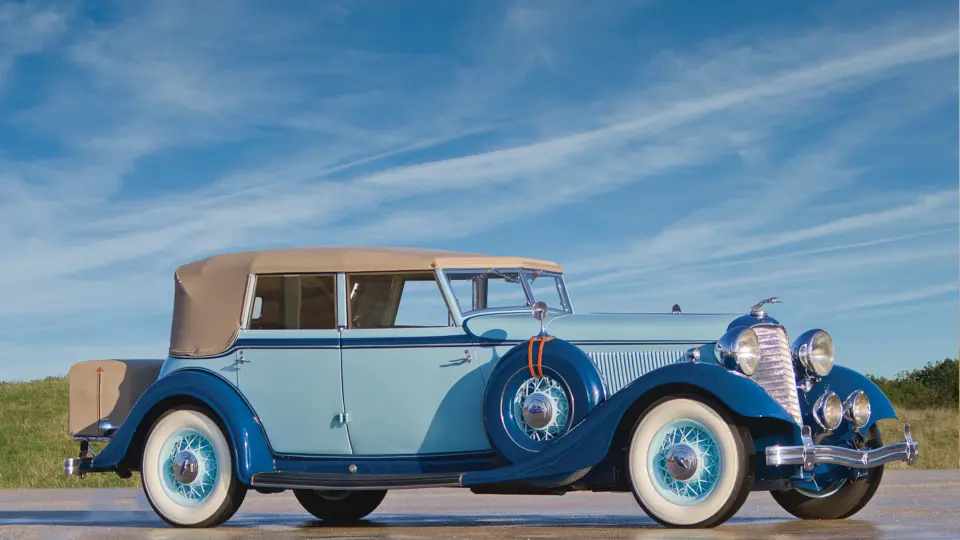
 | Amelia Island, Florida
| Amelia Island, Florida
